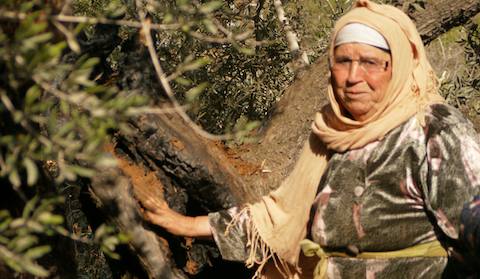Tag: Farmers
-
Israeli forces fire on Gaza farmers and internationals in Khuza’a [Update: Video Added]
12th December 2012 | Khuza’a, Besieged Gaza. Gaza- Israeli forces fired live ammunition and tear gas at unarmed farmers and international activists working in Khuza’a, a small village outside of Khan Younis located near the Israeli border. At 10:30 AM, the farmers arrived and began to plough approximately 100 meters from the separation fence while internationals…
-
Gazan farmers at work in Khuza’a
by Joshua Brollier 10 December 2012 | Besieged Gaza strip, Khuza’a Today, Gazan farmers from Khuza’a, a small village near Khan Younis, worked on their land in defiance of Israeli military harassment. Farmers ploughed approximately seven dunams and then sowed wheat in a plot that they had previously been denied access to before the November…
-
Arson Attack on Olive Trees in Qaryut
14 October 2012 | International Solidarity Movement, West Bank Latif Ali with one of her trees that were destroyed. Last night in the West Bank village of Qaryut, 12 Palestinian owned olive trees were irreparably destroyed in a late night arson attack by Israelis from the illegal West Bank settlement of Eli. The attack follows…

